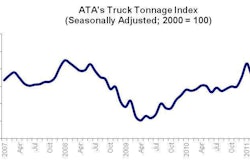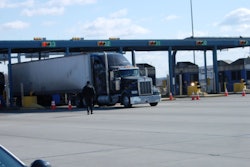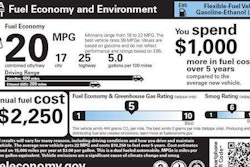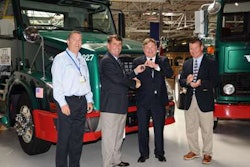Hi Tech Solutions, a developer and provider of optical character recognition and computer vision systems, recently has commercialized third generation technology across its port automation and security systems product lines. The new 3G OCR product releases include systems for automating container and vehicle data capture at terminal gates, on cranes and at rail facilities, facilitating increased operational efficiency and accuracy of results.
Now available on a global basis, HTS 3G systems combine the latest high-resolution mega-pixel industrial cameras and ultra-strong LED illumination units running on a GigE network with upgraded software. GigE, or Gigabit Ethernet, is the newest generation of Ethernet, with improved data communication rates of up to 1000 Mbps, or 1 gigabit per second, providing high-speed highly reliable transmission of video images and related control data from computer vision systems. HTS 3G systems also can handle significantly higher volumes of data and information provided by the OCR imaging units.
Alongside the use of GigE, the superior capabilities of the new camera and LED technologies mean that 3G systems can capture high-quality images more reliably in a wider range of climate and environmental conditions. This includes better management of the transition from day to night operations, as the new systems are programmed to adjust automatically to differing light conditions.
The implementation of the 3G systems on an IP platform also reduces infrastructure costs for interfacing and networking OCR systems with remote servers, HTS says. For port and terminal operators with fibre infrastructure already installed, no additional cost now will be incurred to place gate lane PCs in an onsite server area, as a direct Ethernet connection to a remote server is more cost-effective; extra charges normally associated with having lane PCs physically located next to each gate are eliminated.
HTS says that the new generation technology further enhances the all-round performance of its OCR systems for container and vehicle identification, giving higher confidence levels, better seal image and detection, sharper imaging for container damage inspection and identification of door direction, improved video clips and enhanced IMO hazardous material label recognition and classification.
“Marine terminals are increasingly looking to automation technologies to deliver improved operational and cost efficiencies,” says Philip Elovic, chief executive officer and president of HTS. “Use of OCR technology in the ports market is well-established and growing. HTS alone has an installed base of over 750 systems in more than 50 terminals and 17 different countries. However, terminals are now expecting more advanced offerings from computer vision systems, as their challenges become more complex both from a logistical and management point of view.”
The first 3G system already has been installed on the U.S. West Coast, and HTS now will provide the 3G technology as standard on all new projects worldwide. For existing installations, the company also will provide 2G to 3G upgrades as requested by customers.











